Syn.: Helleborine lingua (L.) Pers., Orchis lingua (L.) Scop., Serapias elongata Tod., Serapias excavata Schltr., Serapias oxyglottis Willd., Serapiastrum lingua (L.) A. A. Eaton
Family: Orchidaceae Juss.
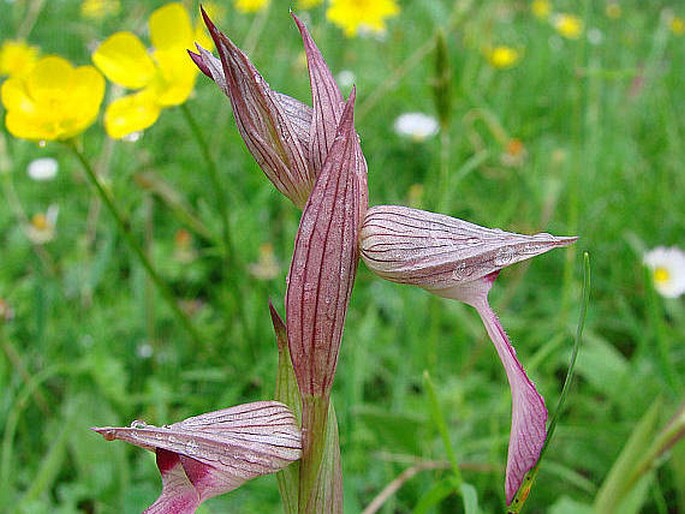
Distribution: Mediterranean and southwestern European species, northward to central France (southern Brittany – Morbihan), eastward to the islands of the Aegean Sea.
Ecology: It grows on meadows and pastures, in macchia and garrigue, forest margins, marshes and maritime sands, up to an elevation of 1200 m. It blooms from March to June.
Description: Perennial herbs with 2–5 tubers. Stem erect, 10–30(–50) cm tall. Leaves (4–8) lanceolate, 5–13 cm long and 1.3 cm wide, entire. Spike elongate, 2–9-flowered; bracts equalling flowers, purple; flowers 15–25 mm; outer perianth-segments ovate-lanceolate, violet or purple, rarely white, inner lateral slightly shorter than the outer; labellum large, about twice as long as other segments, to 29 mm long, with solitary black ridge at base, lateral lobes rounded, dark purple, hidden by galea, epichile ovate-lanceolate, narrowed at base, narrower than hypochile, violet to reddish, rarely yellow or white; spur absent. The fruit is a capsule.
Threat and protection: The Tongue Orchid is protected by the Convention on International Trade in Endangered Species of Wild Fauna and Flora (CITES).
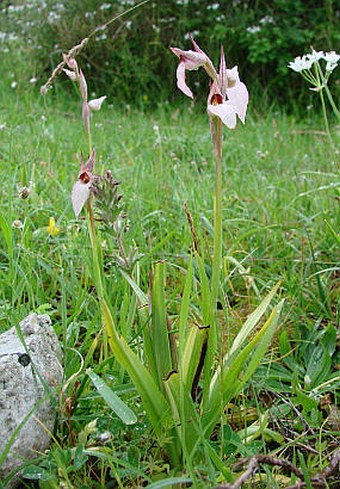
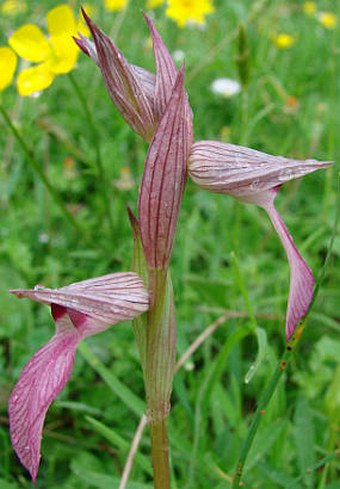
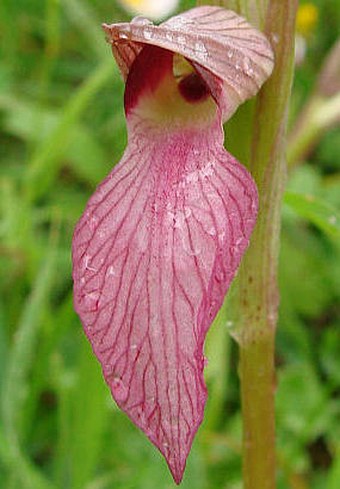
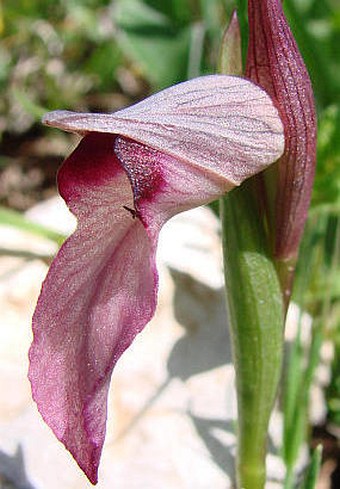

These images were taken in Italy, Gargano, Cagnano Varano and Monte Chiaconcello (April 17 and 21, 2008).


